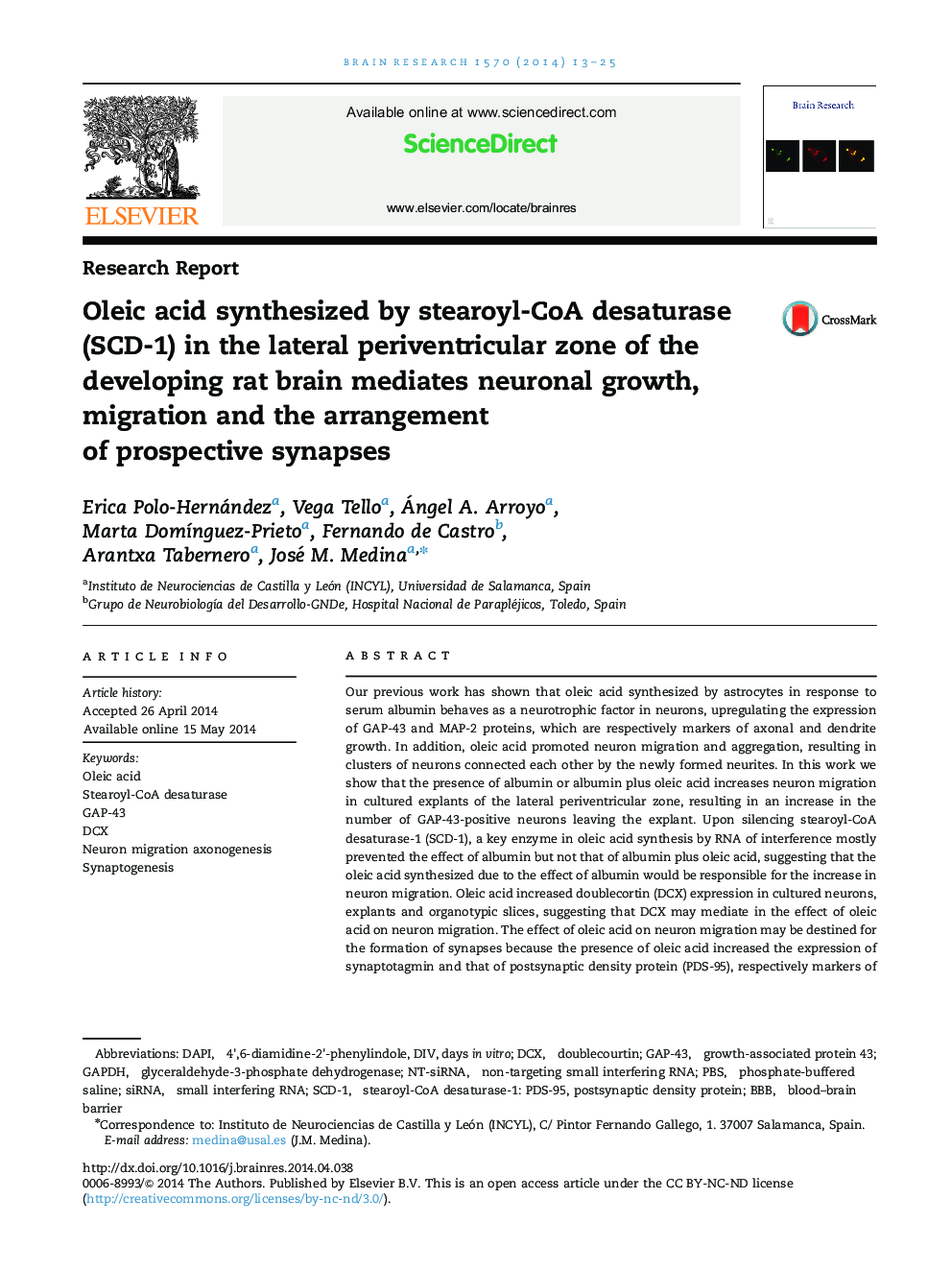| Article ID | Journal | Published Year | Pages | File Type |
|---|---|---|---|---|
| 6263321 | Brain Research | 2014 | 13 Pages |
â¢Oleic acid promotes neurite growth in cultured neurons.â¢Oleic acid enhances neuron migration in periventricular explant cultures.â¢Oleic acid promotes cell migration to generate synapses.
Our previous work has shown that oleic acid synthesized by astrocytes in response to serum albumin behaves as a neurotrophic factor in neurons, upregulating the expression of GAP-43 and MAP-2 proteins, which are respectively markers of axonal and dendrite growth. In addition, oleic acid promoted neuron migration and aggregation, resulting in clusters of neurons connected each other by the newly formed neurites. In this work we show that the presence of albumin or albumin plus oleic acid increases neuron migration in cultured explants of the lateral periventricular zone, resulting in an increase in the number of GAP-43-positive neurons leaving the explant. Upon silencing stearoyl-CoA desaturase-1 (SCD-1), a key enzyme in oleic acid synthesis by RNA of interference mostly prevented the effect of albumin but not that of albumin plus oleic acid, suggesting that the oleic acid synthesized due to the effect of albumin would be responsible for the increase in neuron migration. Oleic acid increased doublecortin (DCX) expression in cultured neurons, explants and organotypic slices, suggesting that DCX may mediate in the effect of oleic acid on neuron migration. The effect of oleic acid on neuron migration may be destined for the formation of synapses because the presence of oleic acid increased the expression of synaptotagmin and that of postsynaptic density protein (PDS-95), respectively markers of the pre- and postsynaptic compartments. In addition, confocal microscopy revealed the occurrence of points of colocalization between synaptotagmin and PDS-95, which is consistent with the idea that oleic acid promotes synapse arrangement.
